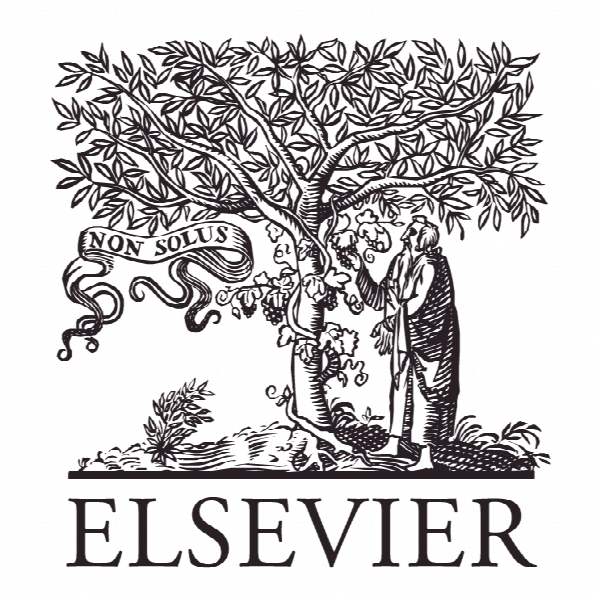تداوم رضایت شغلی چندگانه در میان فروشندگان تجارت به تجارت و تجارت به مصرف کننده: تجزیه و تحلیل چند گروهی Sequencing of multi-faceted job satisfaction across business-to-business and business-to-consumer salespeople: A multi-group analysis
- نوع فایل : کتاب
- زبان : انگلیسی
- ناشر : Elsevier
- چاپ و سال / کشور: 2018
توضیحات
رشته های مرتبط مدیریت
گرایش های مرتبط مدیریت فناوری اطلاعات، تجارت الکترونیک، بازاریابی
مجله تحقیقات تجاری – Journal of Business Research
دانشگاه Shidler College of Business – University of Hawaiʻi at Mānoa – United States
منتشر شده در نشریه الزویر
کلمات کلیدی انگلیسی Multi-faceted job satisfaction, Salespeople, Business-to-business, Business-to-consumer, Satisfaction facet sequencing
گرایش های مرتبط مدیریت فناوری اطلاعات، تجارت الکترونیک، بازاریابی
مجله تحقیقات تجاری – Journal of Business Research
دانشگاه Shidler College of Business – University of Hawaiʻi at Mānoa – United States
منتشر شده در نشریه الزویر
کلمات کلیدی انگلیسی Multi-faceted job satisfaction, Salespeople, Business-to-business, Business-to-consumer, Satisfaction facet sequencing
Description
1. Introduction Salespeople are the dominant drivers of revenue for many firms. However, turnover continues to be high amongst business-to-business (B2B) salespeople (Boles, Dudley, Onyemah, Rouzies, & Weeks, 2012) and even higher amongst business-to-consumer (B2C) salespeople (Hurst & Good, 2009). This is problematic because turnover disrupts the ability of firms to generate revenue (DeConinck & Johnson, 2009) and can lead to the long-term loss of customers (Palmatier, Scheer, & Steenkamp, 2007). In addition, the cost of hiring and training a new salesperson is approximately 200% of their salary (Griffeth & Hom, 2001). Furthermore, as many senior salespeople are or will be retiring soon, much of the institutional and tacit knowledge may be lost when these salespeople leave the firm. Given these issues, it may be more important than ever to retain star salespeople who can mentor and provide knowledge to new salespeople. Therefore, understanding how facets of satisfaction are interrelated is increasingly valuable given the impact that job satisfaction facets have on turnover intentions (Rutherford, Boles, Hamwi, Madupall, & Rutherford, 2009) and willingness-to-mentor (Hartmann, Rutherford, Feinberg, & Anderson, 2014). While salesperson satisfaction’s impact is far reaching, the majority of extant literature assesses satisfaction as a global measure (Churchill, Ford, & Walker, 1974). Further, most studies which examine multi-faceted satisfaction fail to take into account whether or not satisfaction facets are sequenced (Friend, Johnson, Rutherford, & Hamwi, 2013). If the satisfaction facets are sequenced, not accounting for this sequencing can lead researchers to form erroneous conclusions regarding the direct and indirect influence, or lack thereof, of specific satisfaction facets on others. Recently, Friend et al. (2013) develops, tests, and finds general support for a theoretical model delineating causal relationships amongst the satisfaction facets (see Fig. 1). While the findings of Friend et al. (2013) offer great promise, their results are drawn from a single sample of B2B salespeople. To advance understanding of multi-faceted job satisfaction, this research aims to extend the multi-faceted job satisfaction literature in two ways. First, this research examines the validity of the satisfaction sequencing proposed by Friend et al. (2013) with additional B2B data. Babin, Griffin, and Hair (2016) highlight the importance of validation studies given that many replications of studies find only a small percentage of the hypotheses are statistically significant. Thus, validation studies can suppress erroneous findings from influencing the knowledge, beliefs, attitudes and behaviors of researchers and managers (Woodside, 2012). If the satisfaction sequencing is validated, B2B researchers are more apt to expand the knowledge base about which specific facets of satisfaction directly and/or indirectly impact important outcomes for organizations.


